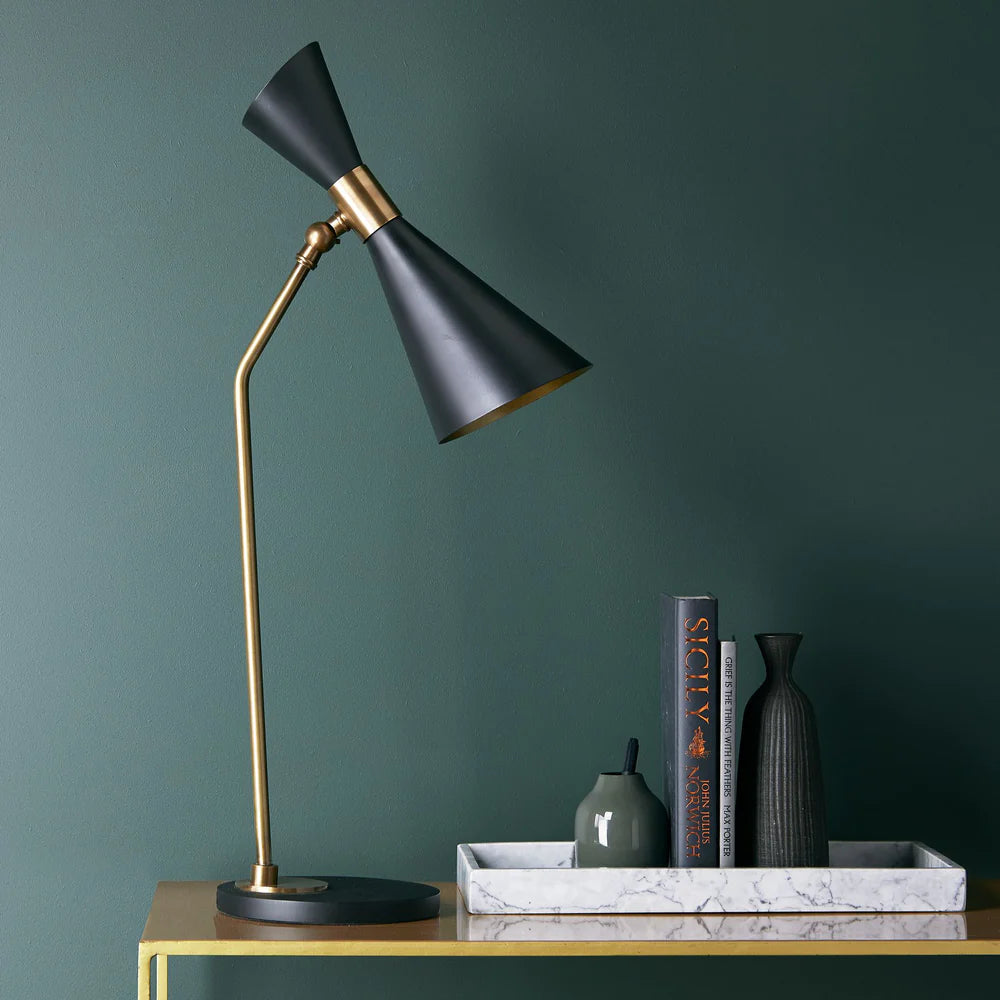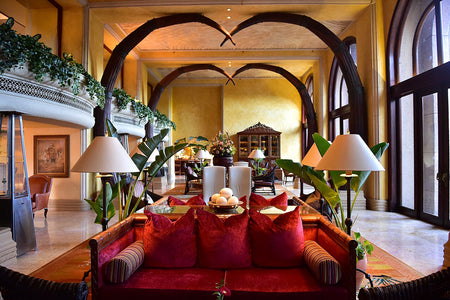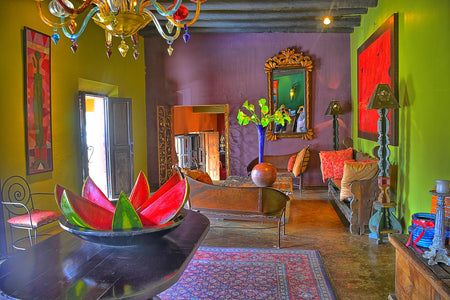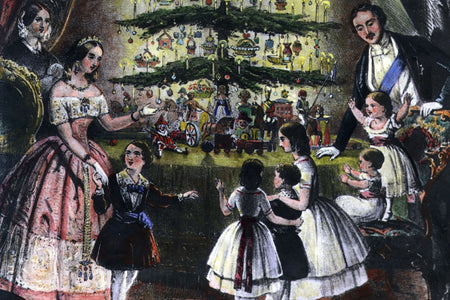 The husband and wife team were giants of mid-century modern design. Here’s their story – plus inspiration for getting the Eames look in your own home...
The husband and wife team were giants of mid-century modern design. Here’s their story – plus inspiration for getting the Eames look in your own home...
If you are a fan of all things mid-century modern, the names Charles and Ray Eames will be more than familiar. And even if not, you’ll know their 1969 Soft Pad Lounge Chair – it’s the iconic star of BBC quiz show Mastermind. In fact, this hugely talented husband and wife design team created many fine chairs, as you will see below...But chairs were only one element of their work, which ranged from industrial design to architecture, and from furniture to graphic design, fine art and film.
Here’s the story of these giants of 20th century design – plus some lighting ideas that pick up on the key elements of their philosophy...
Charles and Ray Eames—the foundation years
Charles Eames was born in St Louis, Missouri, in 1907 and, with early interests that included architecture and photography, studying architecture at the city’s Washington University seemed a natural choice. Charles was a great admirer of Frank Lloyd Wright’s work but his advocacy of modern architecture did not go down well with the university; nor did the fact that he was moonlighting: working his way through college at a local architectural practice. Sleep deprivation began to show and his studies suffered. Charles left the course after just two years, by which time he had already married his first wife, Catherine Woermann; their daughter, Lucia, was born in 1930.Another major influence on Charles’s work was the Finnish architect, Eliel Saarinen (father of architect, Eero), who, in 1938, invited Charles to Michigan to resume architecture studies at Cranbrook Academy of Art. It was at Cranbrook that Charles, who had gone on to become the academy’s head of industrial design, collaborated with Eero Saarinen on a prize-winning furniture project for New York’s Museum of Modern Art. Cranbrook student, Ray Kaiser, contributed graphic design schemes to the project…
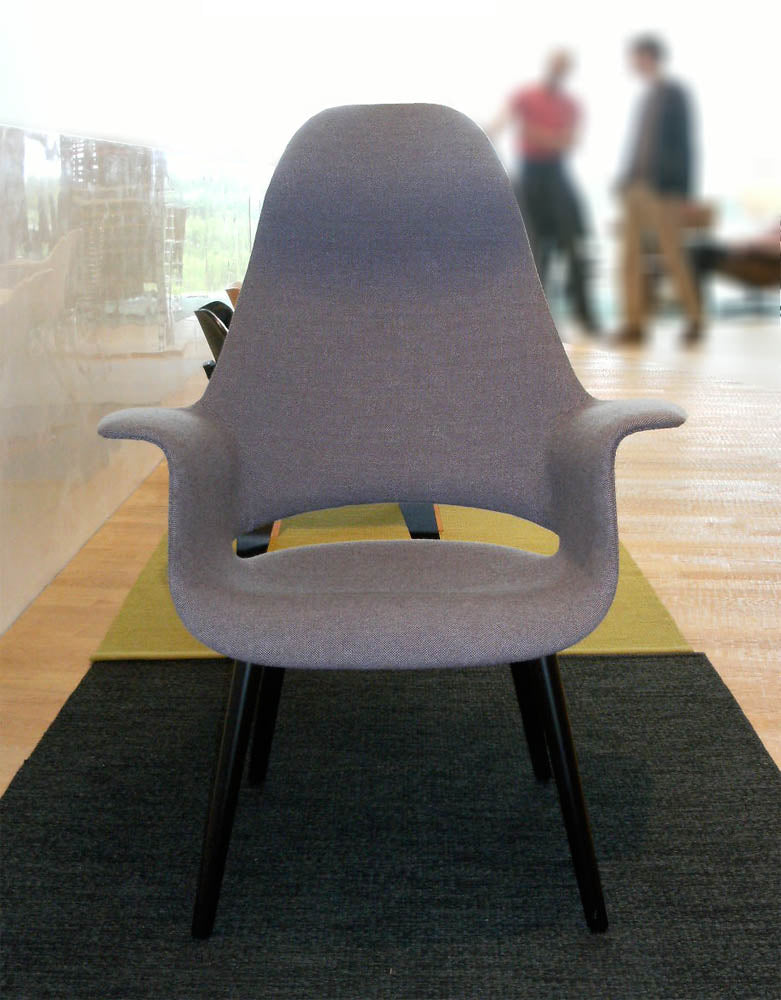
Ray was five years younger than Charles and had grown up in Sacramento, California. From her parents, Ray learned both to value objects that brought joy to people and to enjoy the natural world, which would later influence her innovative designs for furniture and toys. Fine art was her passion, which she studied at college in Millbrook, upstate New York, and then with Hans Hofmann at his studio in New York City, where her focus was abstract expressionism. However, her mother, Edna, became unwell and Ray moved back to California to care for her, until Edna died in 1940. Free to resume and broaden her art studies, Ray enrolled at Cranbrook Academy.
In 1941, Charles and Catherine divorced and Charles married Ray; the couple moved to Los Angeles, set up the Eames Office, and embarked on their remarkable joint career.
The Eames House and the Eames Office
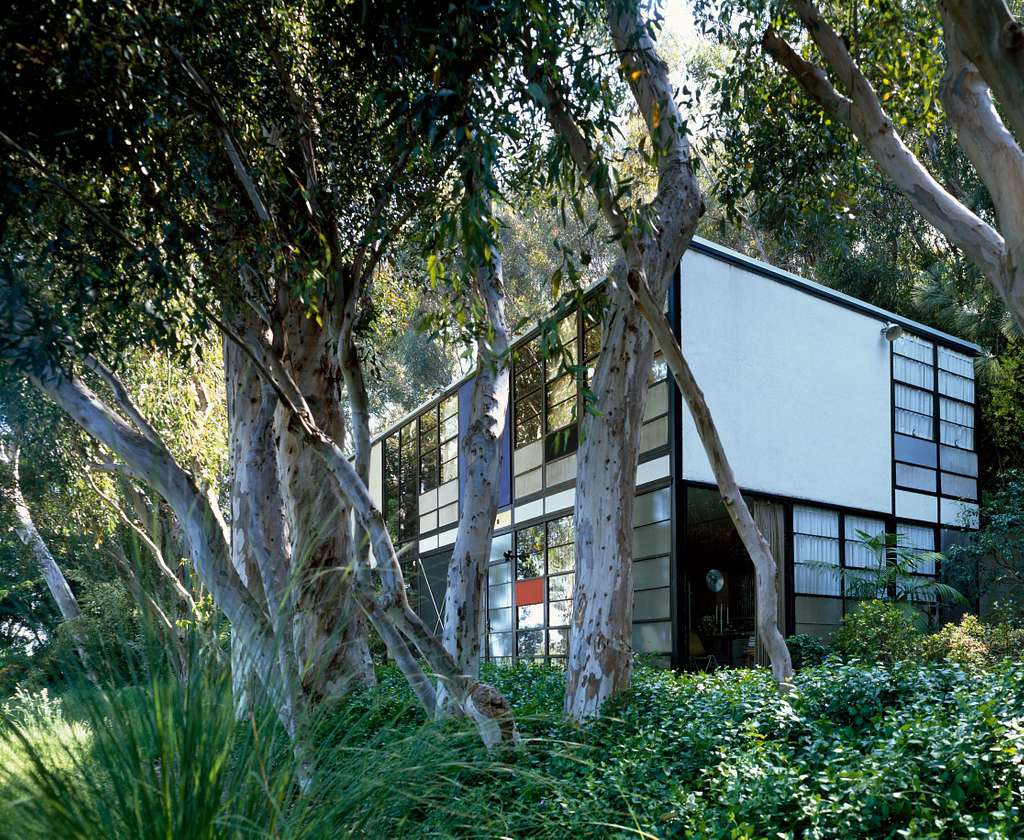
Three years after moving to California, Charles and Eero Saarinen collaborated on a first draft of designs for Case Study House number 8 (otherwise known as the Bridge House), as part of a programme that aimed to showcase affordable homes made of wartime and industrial materials. Charles and Ray spent much time getting to know and love the Pacific Palisades site, which overlooked the ocean. As a result, they set aside the original designs for the house; Saarinen stepped down from the project and Ray stepped up. The house became two and in 1949 Charles and Ray moved into one of them; it would become known as the Eames House and would remain their home for the rest of their lives.

The output of the Eames Office, based in Venice, California, was prodigious. Ray oversaw graphic and textile design and commercial artwork; it was her instinctive feeling for form and colour that was to be so influential in the development of the distinctive Eames style. Early projects included bent plywood furniture designs, which the Eames Office would continue to produce until 1978. Their idea of using bent plywood to create pieces such as the Lounge Chair Wood and the Lounge Chair stemmed from the couple’s designs for splints for injured US Navy personnel.

For their great friend, film director, Billy Wilder, they created the Eames Chaise. And there were many more chairs, using modern materials like fibreglass, including the Shell, which would eventually be produced in a range of colours, from subdued Parchment to vibrant red orange.
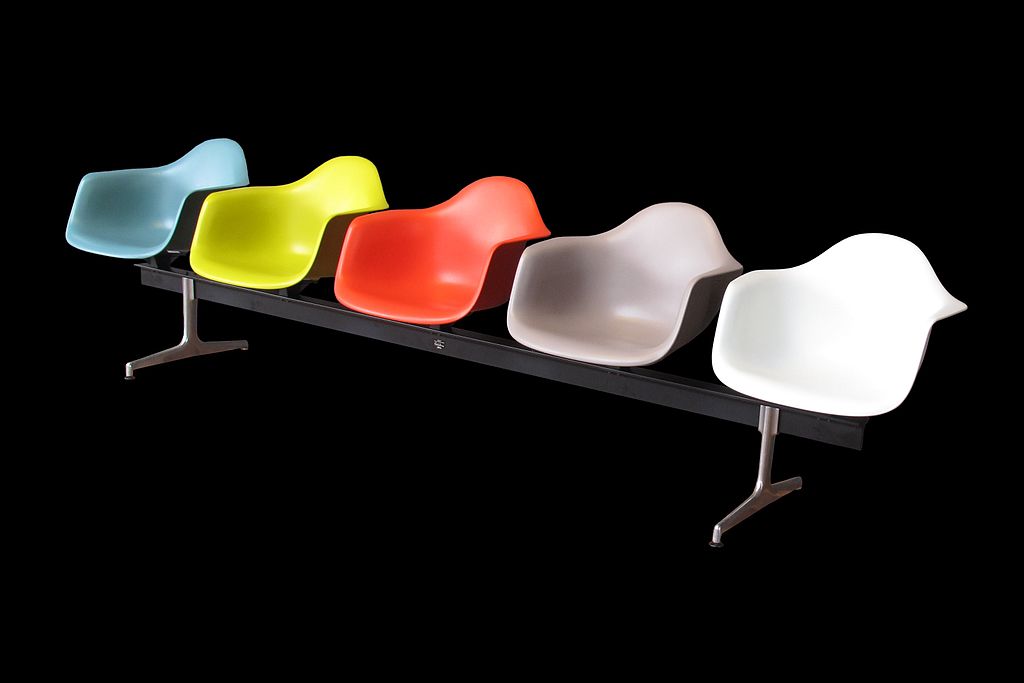
Eames Shell chairs (photo: creative commons)
They worked closely with a leading furniture company, Hermann Miller, which sold many of their designs, although the company’s early catalogues did not credit Ray’s input. In fact, Ray’s major contributions to the work of the Eames Office were frequently overlooked or downplayed for many years, not least by the media. Charles, however, was her greatest champion. “Anything I can do, Ray can do better,” he observed. (An echo, perhaps, of Charles Rennie Mackintosh’s tribute to his wife, Margaret.)
Later years and the Eames legacy
Charles died, aged 71 in 1978. A year later, the Royal Institute of British Architects awarded Charles and Ray the Royal Gold Medal. (Read more about this and hear Ray’s acceptance speech here.) Their last joint project had been a final version of the Eames Sofa; Ray was determined that this would go into production, which it did in 1984. Ray died 10 years to the day after her husband’s death, having spent her final years planning how best the spirit of the couple’s work could be celebrated and continued. In 2004, Charles’s daughter, Lucia set up the Eames Foundation to preserve and share the legacy of the Eames House; the Eames Office continues to preserve and share the design philosophy and legacy of Charles and Ray Eames.
In 2015, the former Eames Office and many examples of the couple’s work were temporarily transported to London’s Barbican Museum where they featured in a major design exhibition entitled The World of Charles and Ray Eames.
The Eames Office philosophy
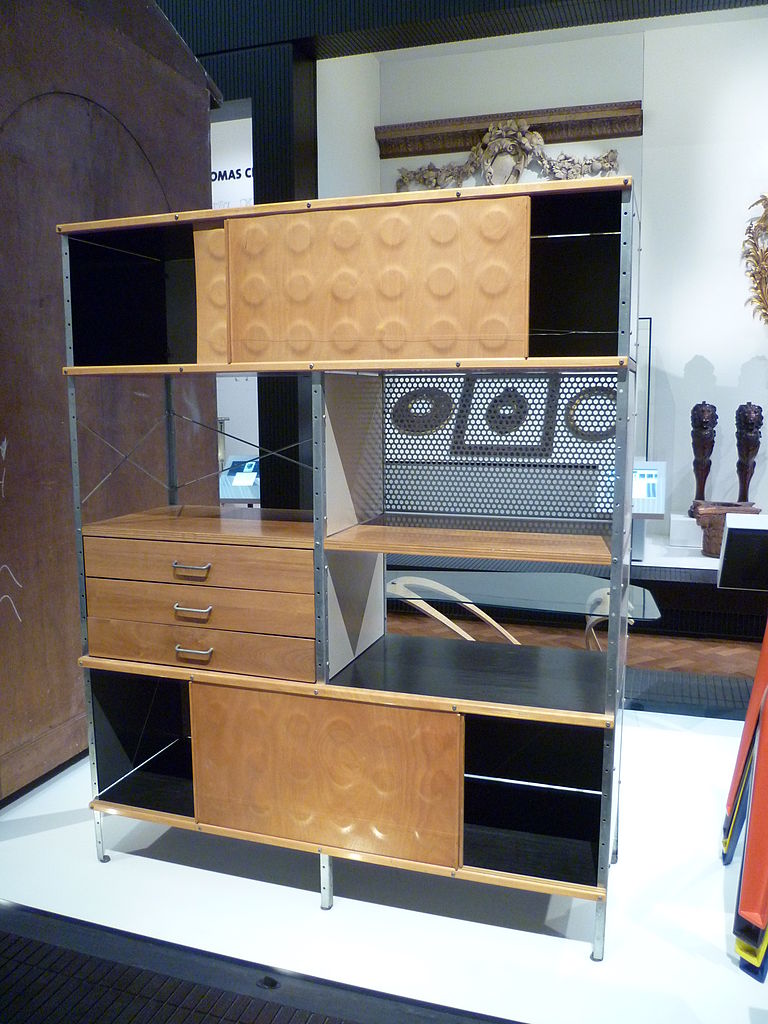
Charles and Ray Eames storage unit, 1949. (photo via creative commons)
A set of basic principles underpinned all aspects of Charles and Ray’s work, including:
Functionality - from furniture to toys, their designs were practical, useful, and visually appealing.
Simplicity - they believed that good design did not need to be complicated. Lines were simple and fuss-free.
Experimentation - they were keen to produce innovative designs, using new materials and techniques.
Playfulness - designs were often whimsical; toys, for example, were fun and engaging. Charles and Ray were firm believers, like the influential Swiss psychologist, Jean Piaget, in the value of play.
Accessibility - Charles and Ray Eames followed in the footsteps of great 19th and early 20th century architects and designers, including William Morris and Frank Lloyd Wright, in believing that good design should be affordable and widely available.

The principle of playfulness: Elephant designed by Charles and Ray Eames, children's hospital, Helsinki, Finland. (photo via creative commons)
Get the Eames look with lighting
Charles and Ray were determined workaholics, who spent long days, and often evenings and nights, at the office. If that sounds all too familiar to you, why not brighten up your workspace with mid-century modern inspired table and desk lights?
The Porcini is our take on the early 20th century mushroom lamp. It has a shallow shade, finished with antique brass and a neat little finial on top, and deftly straddles Art Deco and mid-century modern.
Pooky’s Bow Tie (shown here in black, but also available in white) is the essence of mid-century cool. Perfectly angled, it is large enough to do the job but not overpowering. We like Bow Tie so much that we’ve also made it available as a wall light, a chandelier and a floor lamp.
As we mentioned, Charles and Ray did some rather clever things with bent plywood and Pooky’s Rockport pendant offers something rather clever in turned grained wood, lined with plain white lacquer. Rockport is simple, functional, beautiful and affordable, ticking lots of Eames boxes.

Browse more of Pooky’s mid-century modern style lighting here.
See also:
Classic interior design styles and how to light them – 1. mid-century modern
The history of design in table lamps – 4. the mid-century modern
Great interior designers: Charles Rennie Mackintosh
Great interior designers: Frank Lloyd Wright
Photo top courtesy of Eames Office. Image © Eames Office, LLC. All rights reserved.









